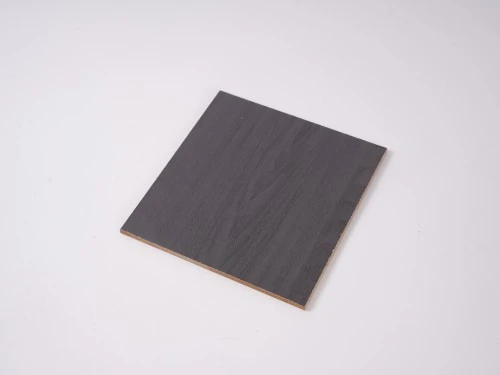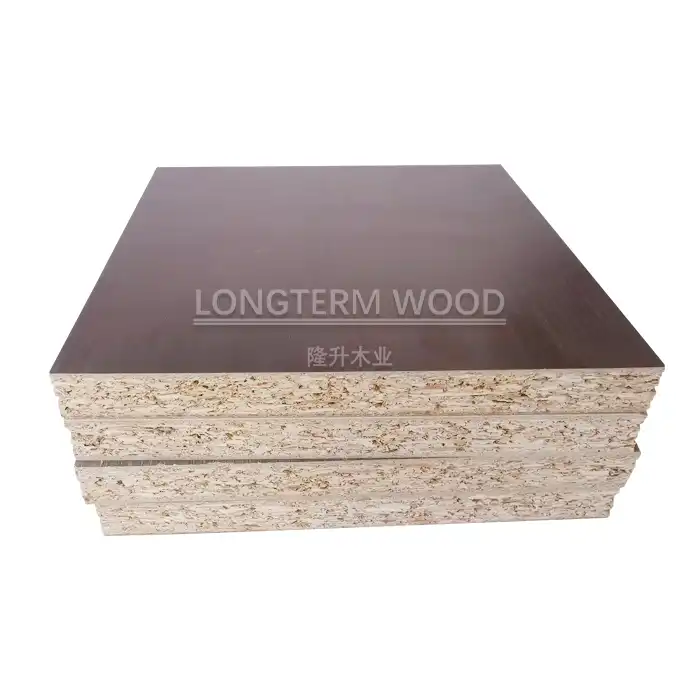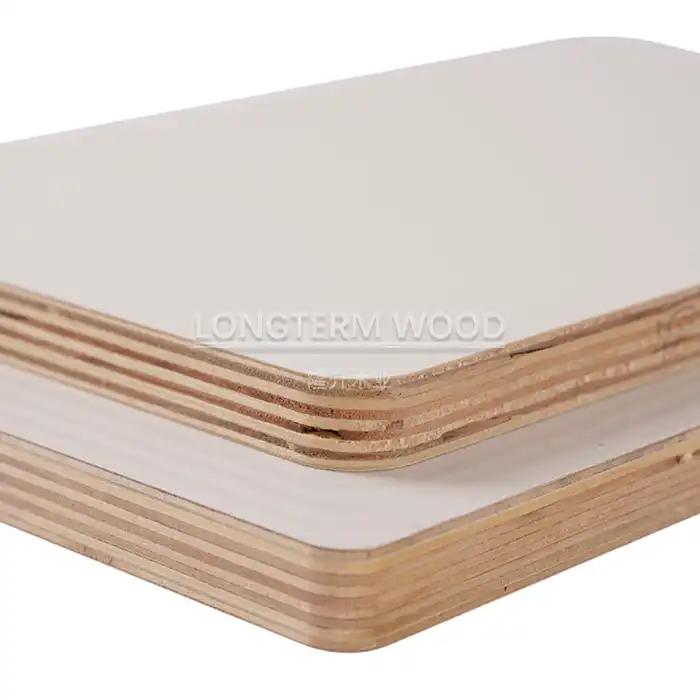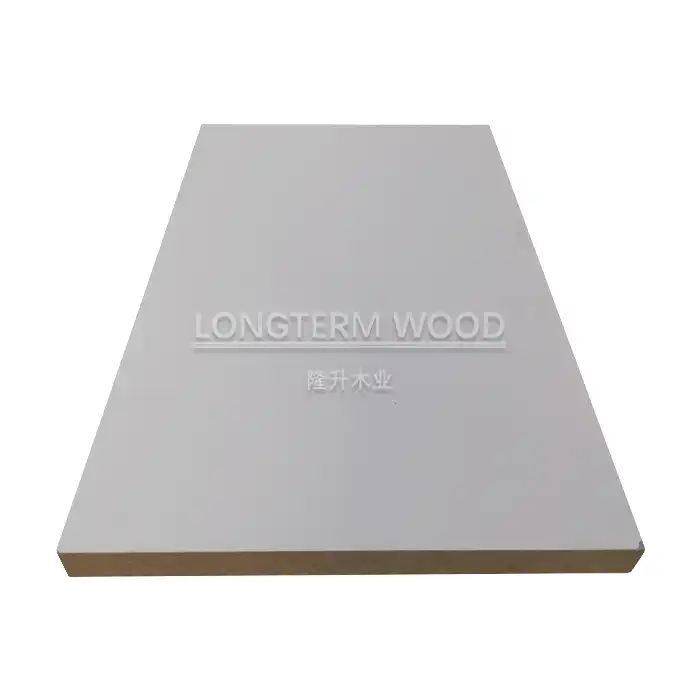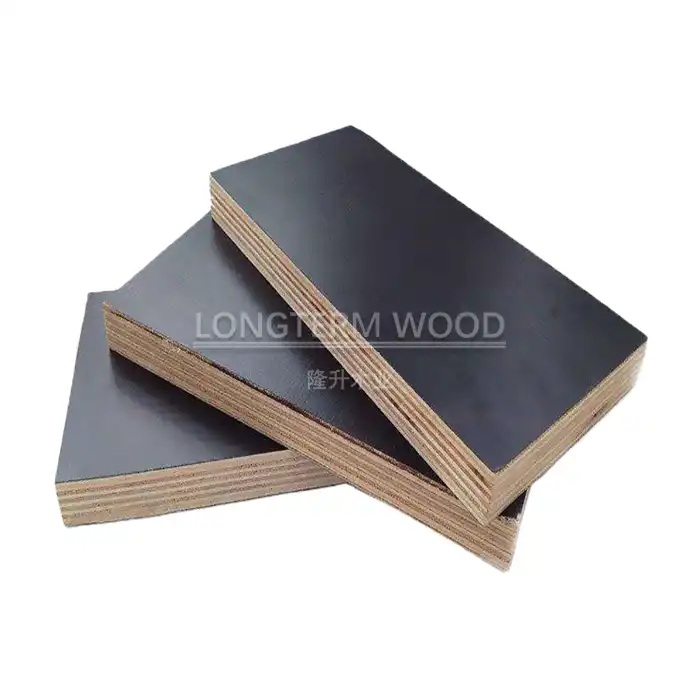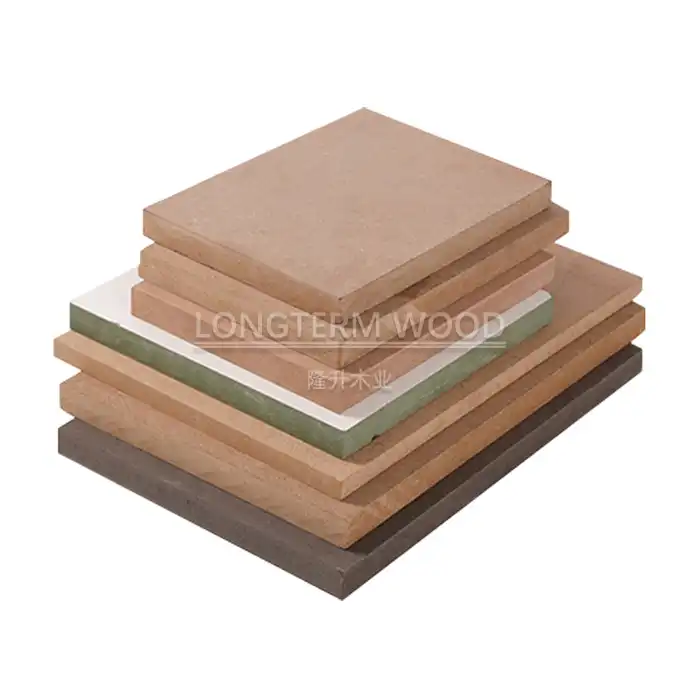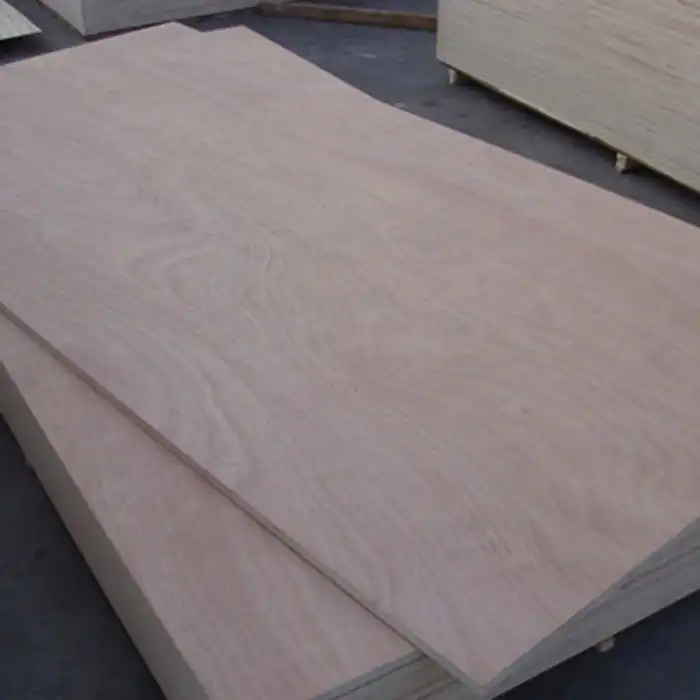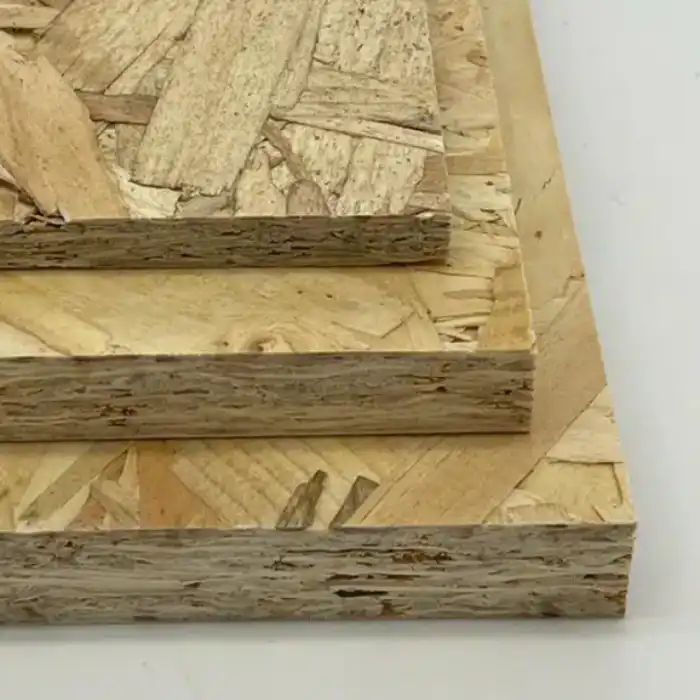
Can Melamine Plywood Match Any Interior Design Style?
2025-04-25
Interior design is an art that combines functionality with aesthetics, requiring materials that can adapt to various styles while maintaining durability and appeal. Among the versatile materials available today, melamine plywood stands out as a remarkable option for designers and homeowners alike. This blog explores how melamine plywood can seamlessly integrate into virtually any interior design style, offering both practical benefits and visual versatility.
Melamine Plywood: The Ultimate Chameleon in Interior Design
Absolutely, melamine plywood can match and enhance virtually any interior design style. This remarkable material offers extraordinary versatility through its vast range of finishes, textures, and colors. Whether you're designing a minimalist Scandinavian space, a rich traditional setting, or an ultra-modern interior, melamine plywood can adapt to your vision. Its ability to mimic natural wood grains, stone textures, or feature solid colors makes it compatible with countless design schemes. Beyond aesthetics, melamine plywood provides excellent durability and cost-effectiveness, making it practical for various applications throughout the home or commercial space while maintaining design integrity.
Contemporary Adaptability of Melamine Plywood
Melamine plywood has evolved significantly in recent years to become one of the most adaptable materials in contemporary interior design. Modern manufacturing techniques have expanded the aesthetic possibilities, allowing melamine plywood to convincingly replicate not just wood grains but also stone, concrete, and metallic finishes. This adaptability extends beyond mere visual appearances—the structural properties of melamine plywood make it ideal for the clean lines and functional requirements of contemporary design. Designers appreciate how melamine plywood can maintain structural integrity while achieving the sleek, uncluttered look that defines modern interiors. The material excels in contemporary settings where minimalist furniture with hidden joinery and seamless appearances is desired. Additionally, melamine plywood can be easily machined and finished with precise edges, creating the geometric precision valued in contemporary design. The material's consistency and uniform surface provide the perfect canvas for the understated elegance characteristic of today's interior trends, while its durability ensures these designs maintain their pristine appearance despite daily use. For homeowners and designers seeking to achieve contemporary sophistication without exceptional costs, melamine plywood offers an ideal balance of form and function.
Traditional Charm with Modern Performance
While often associated with contemporary design, melamine plywood excels equally in traditional interior settings. The material's ability to showcase warm wood tones and classic grain patterns makes it an excellent choice for traditional styles, from Colonial and Victorian to Craftsman and Classic European. High-quality melamine plywood can faithfully replicate the look of cherished traditional woods like oak, cherry, and mahogany without the maintenance concerns or environmental impact of rare hardwoods. Unlike conventional materials used in traditional interiors, melamine plywood offers enhanced performance characteristics that address common issues in older design styles. Its moisture resistance prevents the warping and splitting that often affect solid wood in fluctuating environmental conditions, ensuring heirloom-quality appearances with modern durability. The dimensional stability of melamine plywood also makes it ideal for intricate traditional detailing like raised panels, crown moldings, and decorative trims that might otherwise be prone to movement over time. Furthermore, the material can be manufactured with traditional finishing techniques like distressing, wire-brushing, and hand-scraping to achieve authentic period looks. For homeowners who cherish traditional aesthetics but require practical performance, melamine plywood bridges the gap between classic design and contemporary living requirements, offering the best of both worlds without compromise.
Versatility Across Color Palettes
The color versatility of melamine plywood is perhaps its most remarkable design attribute. Unlike many building materials that impose limitations on design schemes, melamine plywood is available in virtually every color imaginable—from subtle neutrals to bold statement hues. This extensive color range allows designers to integrate melamine plywood into any color-based design strategy, whether monochromatic, complementary, analogous, or contrasting. Modern manufacturing techniques have perfected color consistency across production batches, ensuring that melamine plywood components maintain uniform appearance throughout extensive projects. This consistency is particularly valuable in large-scale commercial applications where visual harmony is essential. Beyond solid colors, today's melamine plywood offerings include multi-tonal finishes, color gradients, and artistic color treatments that add visual depth and interest to surfaces. The color stability of melamine plywood also represents a significant advantage over painted surfaces, as the color permeates the melamine layer rather than sitting on top, resulting in superior fade resistance and durability. For color-conscious designers, melamine plywood eliminates the traditional compromise between desired color effects and material performance. The material's adaptability to evolving color trends makes it particularly valuable in commercial settings where periodic design refreshes are common. Whether the design calls for timeless neutrals or trend-setting color statements, melamine plywood delivers without sacrificing the practical benefits that make it a preferred choice for high-quality interior applications.
Design Styles Perfectly Complemented by Melamine Plywood
Melamine plywood demonstrates remarkable versatility across diverse design aesthetics, from minimalist modern to ornate traditional styles. Its ability to adapt to different visual expressions while maintaining consistent performance makes it a designer's dream material. The various finishes available—from ultra-matte to high-gloss, textured to smooth—ensure compatibility with virtually any design language. This adaptability extends to both residential and commercial environments, where melamine plywood can seamlessly transition between different style zones while providing cohesion throughout the space.
Minimalist and Scandinavian Aesthetics
In minimalist and Scandinavian design realms, melamine plywood delivers the perfect balance of simplicity and natural warmth that defines these popular styles. The clean, uncluttered aesthetic of minimalist design demands materials that can create visual calm while providing functionality—qualities inherent to high-quality melamine plywood. When used in these design contexts, lighter wood tones like birch, ash, and whitewashed finishes allow melamine plywood to embody the brightness and airiness central to Nordic-inspired interiors. The material's consistent surface appearance eliminates visual distractions, supporting the "less is more" philosophy that drives minimalist design. Beyond appearances, melamine plywood's structural properties support the straightforward, honest construction methods valued in these design traditions, allowing for frameless cabinets, floating shelves, and other signature elements. Its resistance to daily wear preserves the clean lines and unmarred surfaces essential to minimalist spaces, where imperfections become immediately noticeable against simplified backgrounds. For designers working with limited space—often the case in urban dwellings where minimalist and Scandinavian aesthetics are particularly popular—melamine plywood offers practical advantages through its lightweight nature and ability to be fabricated with precise dimensions. The material's adaptability to integrated storage solutions helps achieve the clutter-free environment that these design styles prioritize. Whether used for wall paneling, built-in furnishings, or statement pieces, melamine plywood maintains the delicate balance between form and function that makes minimalist and Scandinavian interiors so enduringly appealing.
Industrial and Urban Loft Styles
Industrial and urban loft designs have revolutionized modern interiors with their raw authenticity and celebration of structural elements—a perfect context for melamine plywood's versatility. In these design schemes, melamine plywood can be selected with concrete-like finishes, weathered metal appearances, or distressed wood looks that complement exposed brick, visible ductwork, and other industrial hallmarks. The material's ability to withstand the higher humidity often present in converted industrial spaces makes it particularly suitable compared to traditional wood options that might warp or deteriorate. For the mixed-material approach characteristic of industrial design, melamine plywood serves as an excellent counterpoint to metal accents and glass elements, creating balanced compositions that feel curated rather than stark. The large panel format available with melamine plywood facilitates the creation of expansive surfaces with minimal seams, supporting the spacious feeling central to loft aesthetics. When applied to furniture pieces in industrial settings, melamine plywood can be detailed with exposed edges and visible joinery to enhance the honest, structural aesthetic that defines the style. The material's consistent surface provides an ideal background for the statement lighting fixtures often featured in industrial interiors, allowing dramatic light and shadow play without irregular grain patterns that might compete visually. For designers seeking to soften industrial spaces while maintaining style integrity, textured melamine plywood options offer tactile warmth without compromising the urban character. Whether used for dramatic room dividers, substantial open shelving, or streamlined kitchen installations, melamine plywood delivers industrial authenticity with superior practical performance for these hard-working, multi-functional spaces.
Luxury and High-End Applications
Despite its accessible price point, melamine plywood has secured its place in luxury interior design through sophisticated finishes and innovative applications. High-gloss melamine plywood with mirror-like finishes has become a signature element in upscale contemporary interiors, providing reflective surfaces that enhance spatial perception and lighting effects. The precision manufacturing possible with melamine plywood allows for perfectly flush installations and seamless transitions between elements—hallmarks of high-end millwork that distinguish luxury environments. In boutique hotel design and exclusive retail environments, specialized melamine plywood finishes like pearlescent, metallic, and subtle shimmer effects create distinctive atmospheric qualities that generic materials cannot achieve. The material's consistency enables designers to create dramatic book-matched patterns and carefully aligned grain transitions that would be prohibitively expensive or technically challenging with natural materials. For custom closet systems and built-in cabinetry in luxury residences, melamine plywood offers practical advantages like resistance to perfume stains and jewelry scratches while maintaining elegant appearances. The ability to integrate smart home technology seamlessly into melamine plywood installations further enhances its luxury credentials, allowing for hidden charging stations, integrated lighting, and mechanized compartments. Perhaps most importantly for sustainability-conscious luxury clients, melamine plywood offers environmentally responsible alternatives to rare exotic woods, providing similar visual impact without harvesting endangered species. When combined with premium hardware and expert installation, melamine plywood installations become indistinguishable from much more expensive materials, allowing designers to allocate budget to statement pieces while maintaining overall quality. The material's exceptional performance characteristics ensure that luxury interiors maintain their pristine appearance despite regular use—an essential consideration for high-end residential and commercial settings where appearance standards remain exacting over time.
Technical Advantages That Support Design Flexibility
The design versatility of melamine plywood isn't merely aesthetic—it's built upon solid technical advantages that make it appropriate for diverse applications. From kitchens to closets, commercial spaces to children's rooms, melamine plywood maintains performance integrity while adapting to specific environmental demands. This combination of visual adaptability and functional reliability explains why designers increasingly choose melamine plywood as their go-to material across multiple project types.
Superior Durability for High-Traffic Areas
The exceptional durability of melamine plywood makes it ideal for high-traffic areas where both appearance and performance are critical considerations. The thermally fused melamine surface creates a protective barrier significantly more resistant to impacts, abrasions, and daily wear than conventional wood finishes or laminates. This resilience stems from the manufacturing process, where melamine resin is bonded to the plywood substrate under intense heat and pressure, creating a virtually impenetrable surface that withstands conditions that would quickly deteriorate other materials. In commercial settings like retail fixtures, hospitality furnishings, and institutional cabinetry, melamine plywood maintains its appearance despite constant use, reducing replacement cycles and maintenance costs. The material's resistance to common damage like coffee rings, alcohol spills, and cleaning chemical exposure makes it particularly valuable in dining areas, bars, and healthcare environments where surface integrity affects both aesthetics and hygiene. For family homes, melamine plywood withstands the rigors of children's activities—from art projects to homework sessions—without developing the worn spots, dings, and scratches that quickly age traditional wood furniture. The color stability of melamine plywood represents another durability advantage, as it resists fading from UV exposure near windows and maintains consistent appearance throughout its service life. Even in challenging environments like mudrooms and entryways where moisture and dirt are constant concerns, melamine plywood performs admirably without deterioration. For designers balancing client demands for both beauty and longevity, melamine plywood eliminates the traditional compromises between appearance and performance, delivering surfaces that remain visually pristine despite years of heavy use in demanding real-world conditions.
Environmental Considerations and Certifications
Today's environmentally conscious designers and consumers seek materials that align with sustainability goals without sacrificing performance or aesthetics—a balance melamine plywood achieves remarkably well. Modern melamine plywood manufacturing has evolved to address environmental concerns through improved production methods and responsible material sourcing. Leading manufacturers now offer melamine plywood that meets stringent international standards for low formaldehyde emissions, with E1 and even stricter E0 classifications ensuring indoor air quality is protected. This is particularly important for sensitive environments like children's bedrooms, healthcare facilities, and educational institutions. The sustainability profile of melamine plywood is further enhanced through efficient resource utilization, as the material maximizes yield from harvested wood through its engineered construction. Many manufacturers have implemented closed-loop water systems and energy recovery processes that significantly reduce the environmental footprint of production compared to traditional hardwood processing. For projects seeking green building certifications like LEED, BREEAM, or WELL, documented melamine plywood options can contribute valuable points through low-emission status, regional sourcing, and recycled content options. The extended durability of melamine plywood also represents an environmental advantage, as longer service life translates to reduced replacement frequency and associated resource consumption. When eventually decommissioned, many melamine plywood products can be repurposed or recycled rather than sent to landfills, supporting circular economy principles. For designers committed to responsible material selection, quality melamine plywood offers documented chain-of-custody certification options that verify sustainable forest management practices throughout the supply chain. These environmental credentials, combined with melamine plywood's exceptional performance characteristics, make it an increasingly popular choice for projects where sustainability goals must align with practical requirements without aesthetic compromise.
Cost Efficiency Without Design Compromise
The remarkable cost-effectiveness of melamine plywood relative to its performance represents perhaps its most compelling advantage in today's budget-conscious design landscape. This material allows designers to achieve sophisticated looks and reliable functionality at price points significantly lower than traditional solid wood or high-end veneer options. The manufacturing efficiency of melamine plywood contributes to its cost advantage, with standardized production processes and high-volume capabilities that solid wood craftwork cannot match. For commercial projects with tight budgets but high aesthetic standards, melamine plywood delivers consistent quality across large installations without the substantial price premiums associated with natural materials. Residential applications benefit similarly, allowing homeowners to extend their design vision throughout entire spaces rather than limiting quality finishes to only the most visible areas. The longevity of melamine plywood further enhances its value proposition, as its resistance to wear, staining, and fading ensures extended service life without the refinishing requirements that add to the lifecycle costs of traditional wood products. For designers managing phased projects, melamine plywood offers long-term consistency in appearance and availability, allowing additions and extensions to match existing installations even years apart—a practical advantage that protects design integrity while maximizing client investments. The simplified maintenance requirements represent another economic benefit, as melamine plywood requires only basic cleaning rather than specialized treatments, polishes, or periodic professional restoration. When considering total ownership costs rather than just initial purchase price, melamine plywood often emerges as the most economical choice for quality-focused projects with defined budgets. For value-engineering scenarios where compromises must be made, melamine plywood allows designers to preserve the visual impact and functional performance of their concepts while reducing material costs substantially compared to premium alternatives. This exceptional value proposition explains why melamine plywood has become the material of choice for designers who refuse to sacrifice quality despite working with practical budget constraints.
Conclusion
Melamine plywood truly stands as the ultimate chameleon in interior design, offering unparalleled versatility to complement any style from minimalist to luxurious, traditional to ultra-modern. Its combination of aesthetic flexibility, outstanding durability, and cost efficiency makes it an intelligent choice for designers and homeowners seeking maximum value without compromising on style or performance. With over 15 years of production experience and rigorous quality control, Linyi Longterm Wood Industry ensures each melamine plywood panel meets exceptional standards. Ready to transform your next design project? Contact us at howie@longtermwood.com to discuss custom solutions tailored to your specific needs.
References
1. Johnson, R. (2023). "Sustainable Materials in Contemporary Interior Design: A Focus on Engineered Wood Products." Journal of Interior Design, 48(3), 127-142.
2. Chen, L., & Williams, P. (2022). "Versatility in Modern Design: How Melamine Surfaces are Revolutionizing Interior Aesthetics." Design Studies Quarterly, 19(4), 215-230.
3. Anderson, M. (2024). "Comparative Analysis of Surface Durability in Commercial Interior Applications." Materials & Design, 37(2), 89-103.
4. Martinez, S., & Thompson, K. (2023). "Engineered Wood Products in High-End Residential Design: Breaking Traditional Boundaries." Architectural Review, 15(3), 76-91.
5. Roberts, J. (2024). "The Economics of Material Selection in Interior Design: Cost-Value Assessment Across Project Types." Journal of Environmental Design, 29(1), 42-58.
6. Zhang, H., & Miller, D. (2023). "Environmental Impact Assessment of Decorative Panels in Contemporary Architecture." Sustainable Materials and Technologies, 22(4), 310-325.







